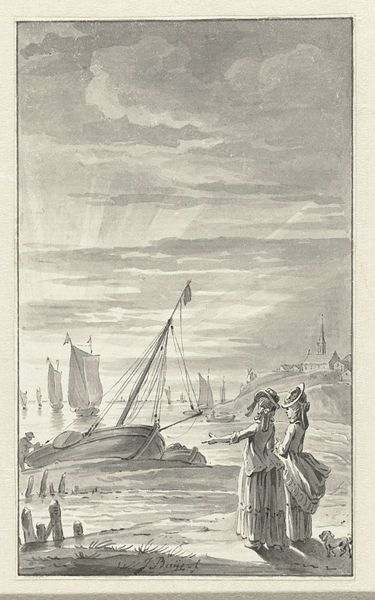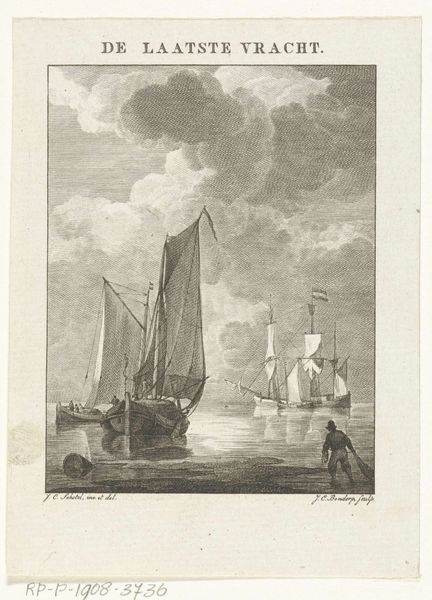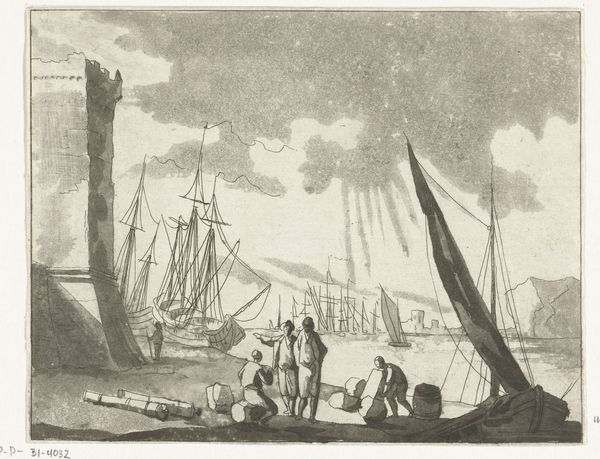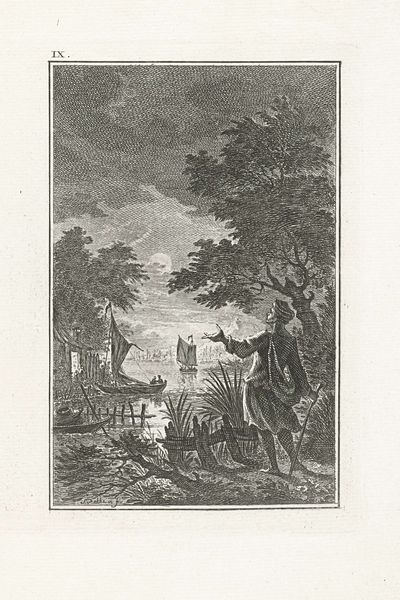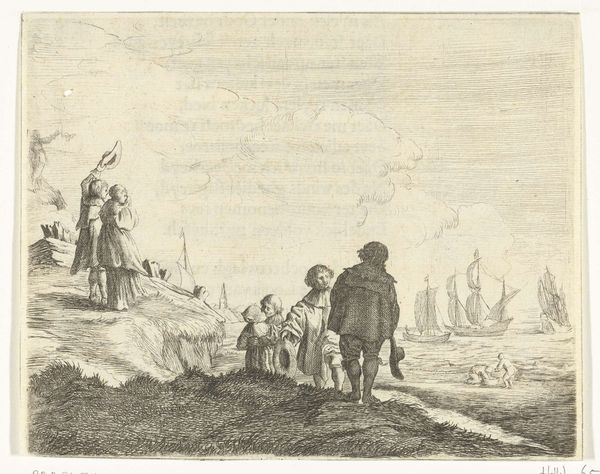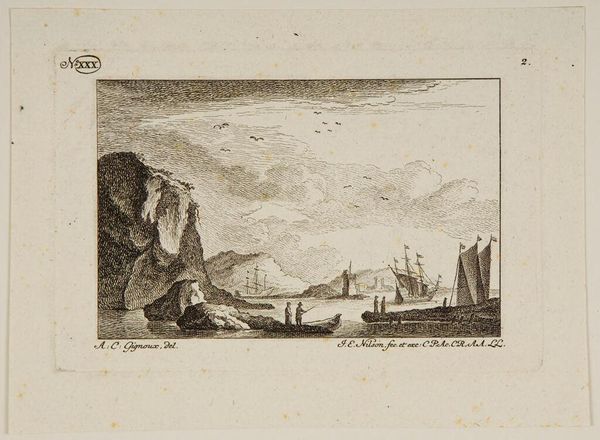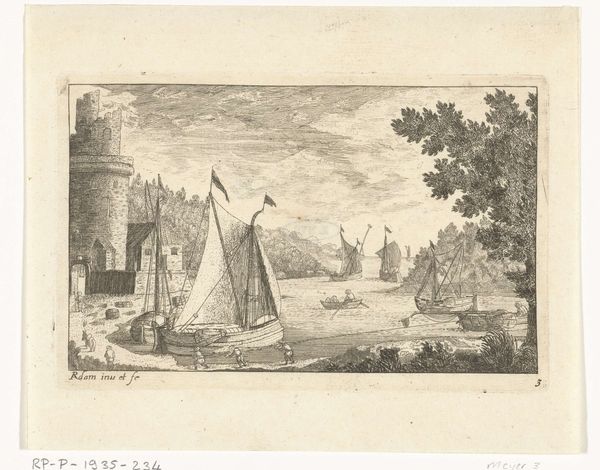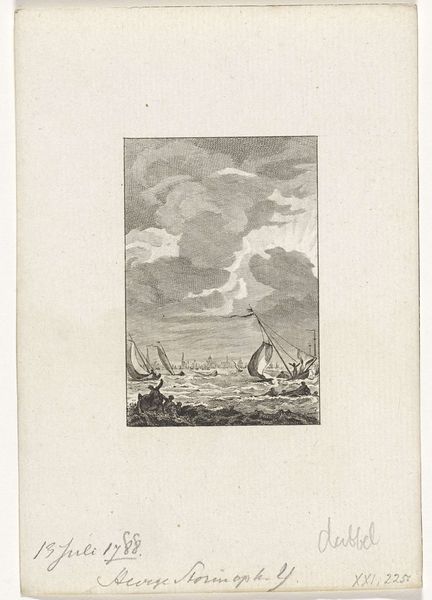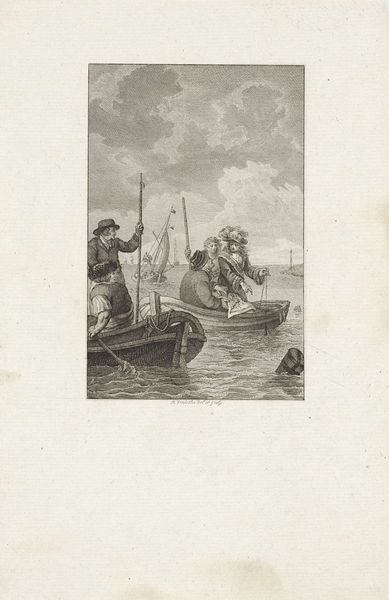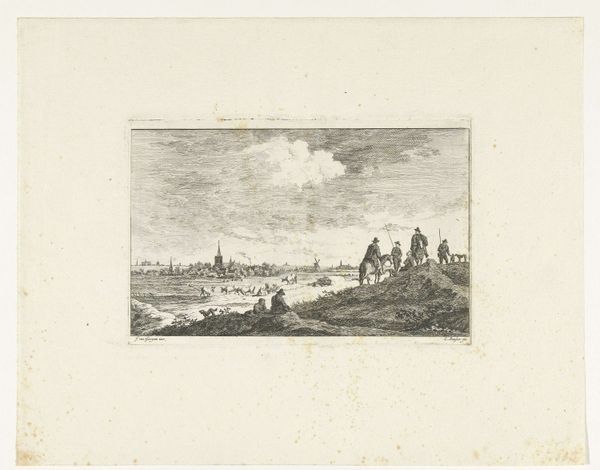
Dimensions: height 208 mm, width 125 mm
Copyright: Rijks Museum: Open Domain
Editor: Here we have Harmanus Vinkeles' "Two Women by a Coast with Ships," an engraving from 1787 held at the Rijksmuseum. It has a calm, wistful feel. What stands out to me is how the two women in the foreground seem both connected to and separate from the scene unfolding on the water. How do you read the relationship between the women and the landscape? Curator: The visual symbols here offer layers of interpretation. The ships, traditional emblems of exploration and commerce, suggest venturing into the unknown. Yet, the women stand on the shore, observers rather than participants. Their clothing also offers a code. What does their attire signify to you about their societal role, considering their placement in relation to the active seascape? Editor: I suppose their clothes, the bonnets and dresses, speak to a life of relative leisure, which separates them from the working lives of the sailors out on those boats. Their placement, looking out from land, maybe implies a more domestic sphere? Curator: Exactly. And what about the light, that breaks through the clouds? Light has long been used to evoke enlightenment, even divine presence. Consider, then, its role in imbuing the seascape with a sense of sublime beauty. Could this indicate a commentary on the emerging Romantic sensibilities of the time? Editor: I hadn't considered the light in that context. It definitely adds to the sense of awe, contrasting the everyday scene of the women with the infinite possibility of the sea. Curator: The cultural memory embedded within seemingly simple genre scenes often speaks volumes. By paying attention to these symbols – clothing, light, the sea itself – we gain insight into the shifting values and emotional landscape of an era. Editor: So it's about understanding how the artist used these established visual shorthands to comment on their world. That's really fascinating.
Comments
No comments
Be the first to comment and join the conversation on the ultimate creative platform.
